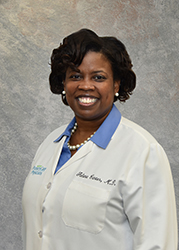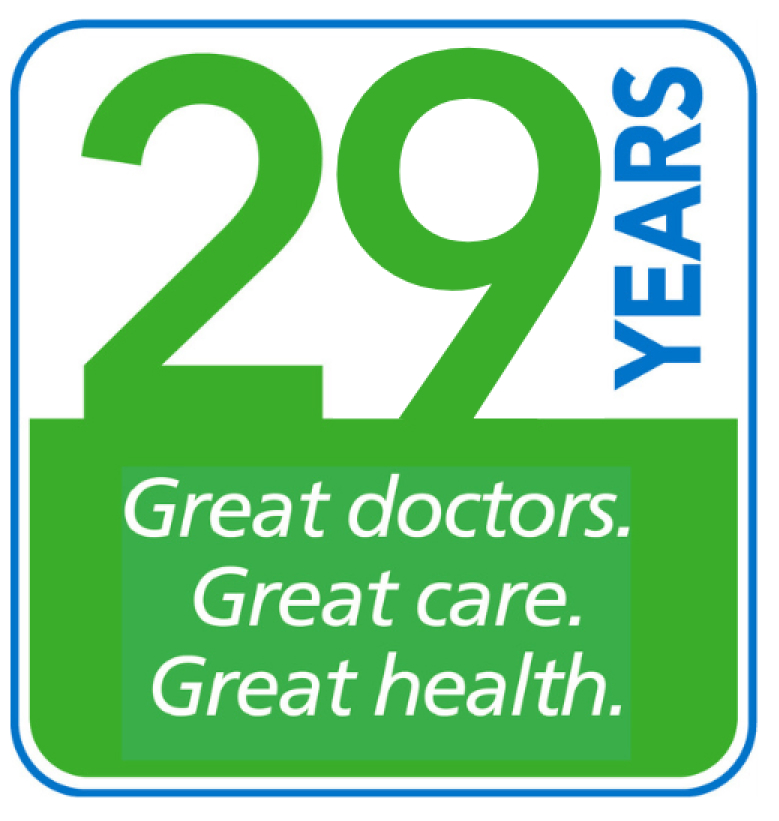Category Archives: Family Health
Headaches: When to Call the Doctor
By: TRANG M. PHAM, M.D.
Headaches are our most common form of pain and a major reason for trips to the doctor. While most headaches are just a temporary nuisance, sometimes they can warn you about a serious health problem that needs immediate attention.
Causes of headaches
Headaches happen when nerve endings in your body react to triggers and send pain messages to your brain. Chemical activity in your brain, the nerves or blood vessels surrounding your skull, or the muscles of your head and neck can play a role in headaches.
A primary headache is caused by problems with pain-sensitive nerves in your head and is not a symptom of another medical problem. Primary headaches can be triggered by lifestyle factors, such as stress, alcohol (especially red wine), certain foods (such as processed meats with nitrates), poor sleep and poor posture.
A secondary headache is related to medical conditions that trigger pain-sensitive areas in the neck and head, including a neck injury, eye problems, and infections in your jaw, teeth, or sinuses. More serious causes of secondary headaches can be brain tumors, aneurysms, and meningitis.
Types of headaches
There are many types of headaches, but three of the most common are tension, cluster, and migraines.
Tension headaches are the most common kind and are often brought on by stress and tight muscles. Symptoms include:
- Gradual start
- Head usually hurts on both sides
- Pain is dull or feels like a band or vice around the head
- Pain may involve the back part of the head or neck
- Pain is mild to moderate
- Typically, does not cause nausea, vomiting or sensitivity to light
Cluster headaches usually occur in a series that may last weeks or months. They are more common in men than women and may be caused by alcohol use, smoking cigarettes, bright light, exercise/exertion, hot weather or water, and foods with nitrates, such as bacon or lunch meat. Symptoms of cluster headaches include:
- Severe pain on one side of the head, usually behind one eye
- The eye that is affected may be red and watery with a droopy lid and small pupil
- Swelling of the eyelid
- Runny nose or congestion
- Swelling of the forehead
Migraines mostly affect women. The average migraine lasts from four hours to three days, but severe attacks can last longer, badly impacting your work, family, and social life. In addition to headache pain, migraines can include:
- Nausea and vomiting
- Lightheadedness
- Sensitivity to light and other visual symptoms, such as flashing spots, wavy lines, and blurred vision
Treatment depends on the headache
Effective treatment depends on what type of headache you have. It may include:
- Avoiding known triggers, such as certain foods and beverages
- Stress management
- Changing eating habits
- Exercise
- Resting in a quiet, dark place
- Over-the-counter medications or prescriptions from your healthcare provider
Migraine and cluster headaches may need specific medicine management:
- Preventive medicines: Prescribed by your healthcare provider and taken daily to reduce the onset of headaches.
- Abortive medicine: Prescribed by your healthcare provider and acting on specific nerves and blood vessels in the head to stop a headache in progress.
- Rescue medicines: Over-the-counter pain relievers to stop the headache.
When you should call your doctor
Most headaches can be treated with over-the-counter medicine and will go away on their own. But there are times when they can be a symptom of serious medical conditions, such as a blood clot, aneurysm or tumor in the brain, concussion, encephalitis, meningitis, or stroke. Call your healthcare provider immediately if you experience a sudden, severe headache with:
- Fever
- Nausea
- Vomiting
- Convulsions
- Shortness of breath
- Confusion
- Muscular weakness
- Double vision
- Change in level of consciousness
If headaches are an unpleasant part of your life, contact your MPCP healthcare provider to discuss what can be done to help you feel better.
 Dr. Pham is a MPCP partner and cares for patients in the Pasadena office. She holds her medical degree from Jefferson Medical College and is certified by the American Board of Family Medicine.
Dr. Pham is a MPCP partner and cares for patients in the Pasadena office. She holds her medical degree from Jefferson Medical College and is certified by the American Board of Family Medicine.
Move Over Lyme Disease, Here Comes Babesiosis
By: TIMOTHY KLEPPER, M.D.
Tick season is here, and we’re hearing the usual warnings about Lyme disease. But due to a mild winter and spreading tick population, there’s a new threat to watch out for: babesiosis (bah-bee-see-oh-sis).
Both Lyme disease and babesiosis are parasitic diseases carried by deer ticks, also called black-legged ticks. The CDC reports a significant increase in reported cases of both this year in the eastern U.S.
Lyme disease and babesiosis differ in their symptoms and health risks. Here’s a side-by-side comparison of the two, and what you need to look out for.
| Babesiosis | Lyme disease | |
| Likelihood of infection | Low, especially if tick is attached for less than 36 hours | Low, especially if tick is attached for less than 36 hours |
| How soon symptoms start | 1-4 weeks after tick bite | 3-30 days after tick bite |
| Symptoms | Mild to severe flu-like symptoms: fever, chills, sweating, loss of appetite, nausea, tiredness
In severe infections: yellowish skin or eyes, pale skin, dark urine, shortness of breath, nausea and vomiting, abdominal pain, neck stiffness, sudden mood changes |
Circular bulls-eye rash around the tick bite
Early infection: flu-like symptoms: tiredness, muscle pain, joint pain, headaches, fever, chills |
| Risks | Can be life-threatening, especially if you have a weak immune system or don’t have a working spleen. May cause anemia, enlarged spleen, fluid buildup in your lungs, blood clotting problems, kidney or liver failure | Late infection: neck stiffness, pain and swelling in your joints, numbness or pain in your limbs, memory problems, difficulty concentrating, heart problems. Usually not life-threatening |
| When you should see a doctor | If you were bitten by a tick and have flu-like symptoms, especially if you have a weak immune system | If you were bitten by a tick and have an expanding red rash around the bite or have flu-like symptoms |
| Usual treatment | Combination of anti-parasitics and antibiotics Antibiotics | Antibiotics |
How to prevent tick bites
The best way to avoid getting sick with babesiosis and Lyme disease is to not get bitten. Remember the ABCs of prevention:
“A” stands for avoid. You want to avoid areas ticks are found, such as where there are low bushes, leaf litter and tall grass.
“B” stands for bug spray. Use it when you’re outdoors and think you’re going to be exposed to tick bites. The CDC recommends a bug spray that contains either DEET 30% or picaridin. You also could use a spray that has oil of lemon eucalyptus in it.
“C” stands for cover up. Wear protective clothing. If you have clothing over your skin, ticks won’t be able to bite you.
What to do if you’re bitten by a tick
Use tweezers to grasp the tick as close to your skin as possible, then pull the tick off with steady pressure. Then wash your hands and the area of the bite with soap and water. Sometimes, the mouthparts of the tick will break off and stay in the skin. If you can remove them easily, use the tweezers to pull them out. If you can’t remove them easily, just let the skin heal. Your body will break down the remaining mouth parts over time.
Remember, your chances of getting a tick disease are much lower if you remove the tick within 36 hours of being bitten.
 Dr. Klepper is a Maryland Primary Care Physicians, LLC partner and is certified by the American Board of Family Medicine. He cares for patients in the Queenstown office.
Dr. Klepper is a Maryland Primary Care Physicians, LLC partner and is certified by the American Board of Family Medicine. He cares for patients in the Queenstown office.
Where Are We Now With COVID-19?
By: FALANA CARTER, M.D., CO-MEDICAL DIRECTOR
August 2023
Three years after the start of the COVID-19 pandemic, daily information about the disease has receded from public view. Infection rates and deaths are down, emergency measures have ended, and people’s lives have returned to some level of normalcy.
Does that mean COVID-19 is gone?
No, daily infections still occur but the disease has changed since 2020. Mutations of the virus combined with effective vaccinations and natural immunity have reduced the illness burden and death rates.
Like many viruses, COVID-19 continues to mutate and create new strains. In the future, emerging strains could remain relatively mild or cause a serious illness. Currently, the medical community is tracking the variances and learning more about the complexity of the virus, but no clear end of infections is known.
COVID-19 has changed from a pandemic that spreads quickly and endangers large populations in a country or the world to an endemic condition. This means COVID continues to circulate within an area or community. Today, COVID -19 is currently circulating at lower levels, following the pathway to potentially become a seasonal infection flaring more in the fall and winter.
COVID-19 is still a threat
It’s important to remember that though the pandemic has receded, people still get infected with COVID-19, and 50-100 people are dying daily in the US. Those with underlying health conditions – such as obesity, diabetes, asthma or chronic lung disease, sickle cell disease or decreased immunity, and those over 65 years old — can have serious complications and become dangerously ill if infected. We should all be mindful that interactions with those who have high risk for serious complications should be limited if you have any respiratory symptoms.
As many as 16 million Americans are affected by Long COVID. Those patients with Long COVID continue to experience symptoms long after the infection ends, such as fatigue, shortness of breath, cough, headache, and difficulty thinking or concentrating. Researchers continue to explore the underlying cause of Long COVID, but we do know those who are not vaccinated have higher risk for lingering symptoms.
Where we go from here
In just three years, SARS-CoV-2 started as a limited virus overseas and developed into a major respiratory illness that affected the entire world. Increased knowledge of COVID-19 has allowed medical technology to develop various treatments that include: effective vaccines, oral medications and IV infusions that decrease serious complications. As a result of increased community immunity, treatment options and less potent mutations, COVID-19 is no longer a daily hurdle. It’s clear that COVID-19 isn’t going to disappear, so everyone needs to remain vigilant with risk management. Keep current on COVID vaccinations to new variants, continue to follow the news about the virus, and look out for others who are at high risk.
Dr. Falana Carter is Co-Medical Director of Maryland Primary Care Physicians. She is certified by the American Board of Family Physicians and cares for patients in the Arundel Mills office.
Telemedicine vs. Office Visits: Which One Do You Need?
By: STEPHANIE MCKENNEY GROFF, D.O.
Since the start of the COVID-19 pandemic, MPCP has expanded our telemedicine services to give more people access to safe, convenient healthcare. Many of our patients have come to appreciate telemedicine as an alternative to office visits, receiving care in the privacy of their homes. The American Academy of Family Physicians supports telemedicine as an appropriate means of improving health. MPCP offers virtual visits during regular office hours, evenings and weekends.
Telemedicine is ideal for many types of medical appointments, but not for all of them. So when should you schedule an online visit and when should you see your doctor in-person? Here are some helpful guidelines.
Telemedicine visits are good for:
● Follow-up visits: If you’ve already seen your doctor about an illness or injury, follow-up visits using telehealth can help them monitor your progress.
● Review of lab work and imaging results: If your doctor ordered blood work or imaging to assess your concerns or symptoms, a telemedicine visit can give you adequate time to review the results and have your questions answered.
● Prescription refills: If you regularly take medication and your health hasn’t changed, your doctor can often refill your prescription after an online visit.
● Monitoring chronic conditions: Your doctor may be able to monitor a chronic health condition, such as diabetes, heart disease or asthma, and help you manage it without seeing you in the office.
● Counseling and other mental health services: Discussions about mental health, including anxiety and depression, are the top reasons people use telemedicine. Your MPCP doctor may be able to help you with these conditions and can refer you to mental health professionals if needed.
In-person visits are better for:
● Your first time seeing a doctor: It’s important to meet your new doctor so you can start building a relationship and feel comfortable with them. Also, seeing you in-person gives your doctor a baseline understanding of your health and what treatments you may need going forward.
● Physical exams: Are you concerned about a lump you found? Have pain in your joints? Doctors are skilled at recognizing signs and symptoms of disease and will understand what follow-up tests or treatment you need.
● Need for blood tests, X-rays and other imaging scans: A visit in the office allows your doctor to perform an exam to figure out which tests will be best to help with your diagnosis.
● You experience a new symptom to an existing condition: If you have a chronic condition like diabetes or heart disease, even if it is under control, your situation can change. If you notice a new symptom, you should schedule a face-to-face with your doctor.
How to schedule a telemedicine visit
To schedule an appointment during regular hours, just call your MPCP office. A medical assistant will call you before your appointment to help you connect and provide instructions on how to access the video platform that will be utilized during your visit. You may also be advised to collect your medication bottles, gather information such as your blood sugar or blood pressure logs. The medical assistant may ask you to take your temperature, weigh yourself, or provide a blood pressure reading prior to your visit.
MPCP also offers evening and weekend telemedicine visits for acute care (illness) to better fit your schedule. Click here for office hours. Call 410-729-3368 to schedule an after-hours appointment.
 Dr. McKenney Groff holds her medical degree from Lake Erie College of Osteopathic Medicine and is certified by the American Academy of Family Physicians. She cares for patients in MPCP’s Annapolis office.
Dr. McKenney Groff holds her medical degree from Lake Erie College of Osteopathic Medicine and is certified by the American Academy of Family Physicians. She cares for patients in MPCP’s Annapolis office.




